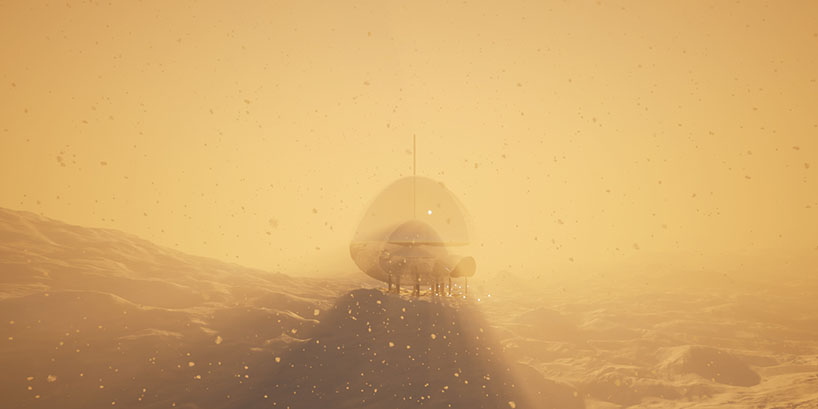
Lucy Zakharova设想用硅石气凝胶制成充气式的月球栖息地
lucy zakharova envisions inflatable lunar habitat made of silica aerogel
由专筑网放空,小R编译
Lucy Zakharova的HESTIA月球栖息地
作为一名太空建筑师,Lucy Zakharova致力于科学和建筑的跨领域设计研究,同时,她也是哥伦比亚大学CSI的联合主任,目前领导NASA的革命性航空航天系统概念项目MEPSA-火星水基推进剂ISRU系统。她的最新项目HESTIA是一艘永久可居住、可自行部署的充气式飞船,展现了她对宇宙的热情,目的是在月球表面建立一个自持续的人类定居点。
“外部充气结构的设计是为了保持稳定的内部温度和大气,这是船员健康和生存的必要前提。本体建筑在可居住空间周围创造了加压环境,能够保护宇航员免受月球表面极端温度和恶劣条件的影响。”建筑师解释道。
HESTIA LUNAR HABITAT BY LUCY ZAKHAROVA
As a Space Architect, Lucy Zakharova is dedicated to scientific and architectural research that integrates design across scales and disciplines. Co-Director of Columbia University CSI, she is currently leading NASA’s Revolutionary Aerospace Systems Concepts project MEPSA – Mars Water-Based Propellant ISRU system. Expanding her passion for the cosmos, Zakharova presents HESTIA — a permanent, habitable, self-deployable, and inflatable vessel that comes in a series of efforts to establish a self-sustainable human settlement on the surface of the moon.
‘The exterior structure is designed to maintain a stable internal temperature and atmosphere, which is necessary for the well-being and survival of the crew. Its architecture creates a pressurized environment around inhabitable volume, protecting astronauts from the extreme temperatures and harsh conditions of the lunar surface,’ explains the architect.
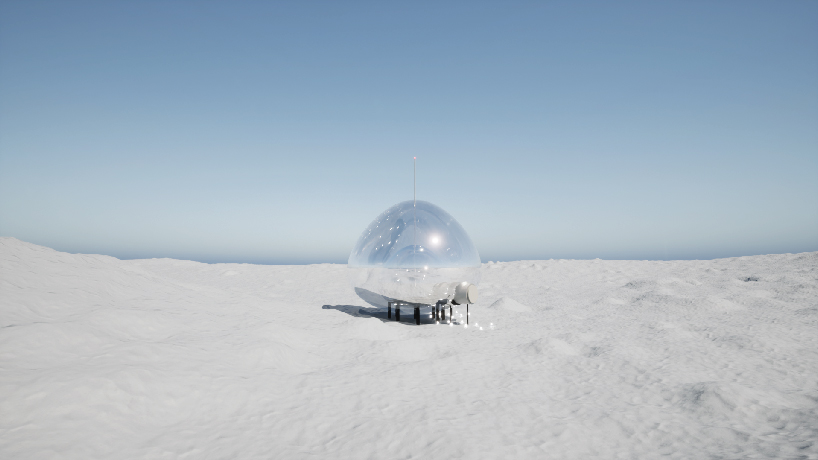
all images © Lucy Zakharova
使用充气结构和高度耐用的绝缘材料
月球上没有大气层的保护,极易受到持续流动的高能粒子、X射线和紫外线的影响,这些会对设备和材料造成高压力。此外,月球表面非常干燥,风沙很大,伴随着巨大的昼夜温差变化,白天最高可达127°,晚上则降至-173°C,在阳光直射与阴影下的温度变化高达200°C。因此,需要慎重选择材料,并控制温度。
在温度方面,HESTIA的充气结构可以很好地平衡室内外的温度和气压,避免因材料热膨胀性不同而导致的结构撕裂,为长期任务提供安全的环境。
该项目的“前身”来源于毕格罗可膨胀活动模块(BEAM),自2016年以来一直用于演示充气空间结构能力。这种充气技术可以实现更加轻巧的设计,在低轨道运输和部署时节约成本、提高效率,除了用于HESTIA月球栖息地,还用于另一个充气式模块——TransHab,NASA约翰逊航天中心开发的火星栖息地。
USING HIGHLY DURABLE + INSULATING ELEMENTS
Zakharova (see more here) explains how our Moon has no atmosphere to protect it from solar wind, micrometeoroids, and radiation. It is vulnerable to the constant flow of high-energy particles, X-rays, and ultraviolet light that cause high stress on equipment and materials. Its surface is extremely dry and dusty, with temperatures changing dramatically between day and night — reaching up to 127*C (261*F) during the day and dropping to -173*C (-279*F) at night. Simultaneously, temperatures in direct sunlight vs. shadow can vary up to 200*C (400*F) degrees. Consequently, materials must be chosen carefully and temperatures managed.
‘As an example, one material may have dramatically different thermal expansion characteristics while interfacing with another material, resulting in a fatality of a structure. Such habitat may rip itself apart as materials expand and contract differently. Lunar conditions make it very difficult to maintain equipment and active habitable structures on the lunar surface and make it unlikely that any future long-term missions will not include additional layers of durable insulation,‘ she continues.
Zakharova based her project on the ‘predecessors’ of HESTIA — namely, the Bigelow Expandable Activity Module (BEAM) used to demonstrate inflatable space structures’ capabilities since 2016. Such an inflatable technology allows for a more compact and lightweight design, making it more cost-effective and efficient to transport and deploy in low orbit. TransHab is another inflatable module developed by the NASA Johnson Space Center as part of the Mars Direct program to send humans to the red planet. The program envisioned TransHab as a habitat for long-duration space missions.
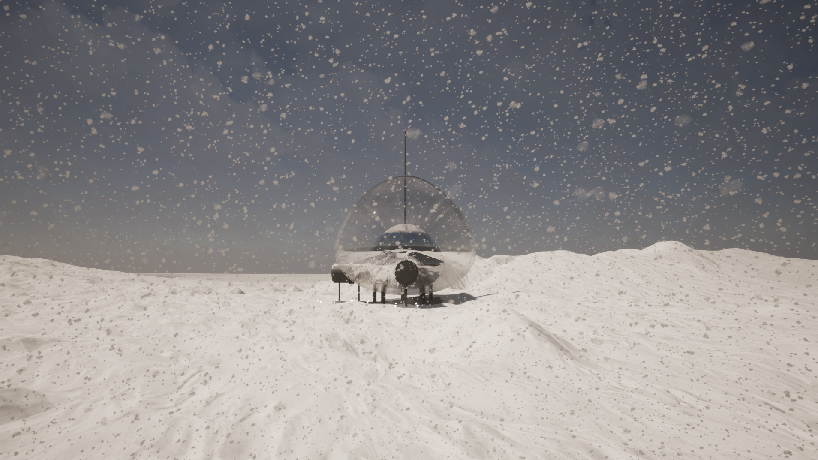
在材料选用上,由于月球上的恶劣环境,该项目必须使用额外的耐用绝缘层以维持设备和结构的活跃性。而HESTIA采用的硅石气凝胶是一种高度绝缘的材料,可以保护宇航员免受恶劣环境的影响,并且允许其系统以六边形的模式扩展,不仅满足日益增长的太空探索需求,还能有力阻挡微流星体的辐射和损伤。除此之外,HESTIA还配备了氮气,这是一种具有高绝缘性能和低导热性的天然气,维持在低压力条件下的氮气可以助力整体的功能。
As such, HESTIA presents itself as an inflatable lunar habitat that equalizes temperature and pressure between the inside and outside to provide a safe environment for any long-term mission. Made of silica aerogel — a highly insulating material that shields the crew from the lunar surface’s harsh conditions and vacuum — the structure allows for the gradual scalability of its systems in a hexagonal pattern, responding to the growing needs of space research and exploration as a whole. Beyond insulation, the durable silica aerogel is also highly resistant to radiation and damage from micrometeoroids. HESTIA is also equipped with nitrogen, a natural gas with high insulation properties and low thermal conductivity; the crew would maintain it at a low pressure to ease overall functions.
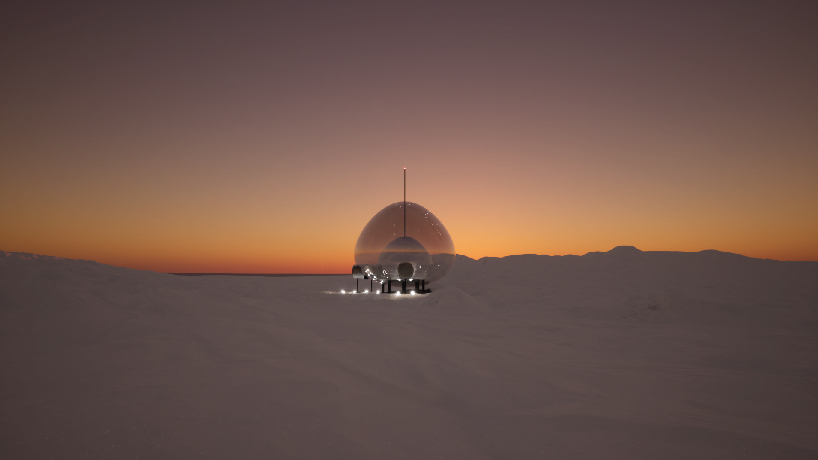
项目的维护和测试
与1968年NASA发射的“阿波罗”号登月飞船不同,HESTIA不能起飞和降落,仅被设计成可居住单元,它的内部拥有制导、导航、实验和样本收集必要的设备,以及与地球安全精准连接的控制系统,为月球长期任务而使用。
因此,其充气结构的整体耐久性非常重要,关键在于维护。Zakharova阐述道:“月球上的压力变化会影响充气结构,进而对材料造成威胁,因此需要一个系统来维持结构内部的压力。此外,还需要一个类似于国际空间站的大型机械臂,对穿孔泄漏问题进行定期检查和维修,这将有助于延长结构的寿命,并确保它尽可能长时间地保持运行。”
ON MAINTENANCE AND TESTING
Unlike the Apollo Lunar Module launched by NASA in 1968, HESTIA is designed solely as a habitable unit for long-duration missions and does not include descend and ascend stages. Its interior will also include guidance, navigation, equipment necessary to perform experiments and collect samples, and control systems to ensure a safe and precise connection with Earth.
The inflatable structure’s overall durability will be affected by its maintenance, Zakharova clarifies: ‘It would require a system to maintain the pressure inside the structure, as well as a system to detect and repair punctures or leaks. A large robotic arm, similar to the one on the International Space Station (ISS), could perform inspections, patch up punctures, and repair the structure as needed. It is important to note that the inflatable structure will be additionally subject to pressure changes, which may cause stress on the material. Concluding regular inspections and repairs using a robotic arm will help extend the structure’s life and ensure that it remains operational for as long as possible.’
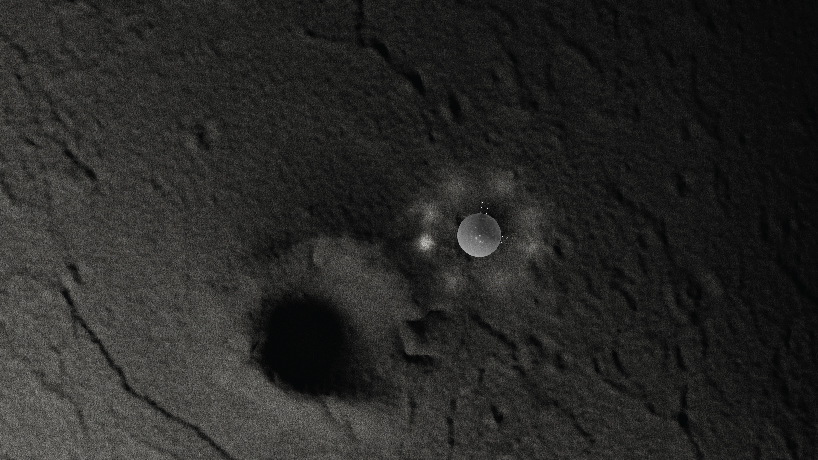
月球上的单个HESTIA
plan of a single HESTIA structure on the moon
根据现有数据,Zakharova提议将HESTIA的南极洲A阶段作为移动测试设施,位于德国纽梅耶三号南极站以南400米,在此试验恶劣环境条件下该设备的抵抗力和耐久性,并让工作人员熟悉其结构和使用。
In line with the data collected, Zakharova proposed the Antarctica Phase A of HESTIA as a mobile test facility to be located 400 meters south of the German Neumayer Station III in Antarctica. This deployment will allow crews to test the mission equipment’s resistance and durability against harsh environmental conditions and familiarize them with the habitat’s architecture and use.
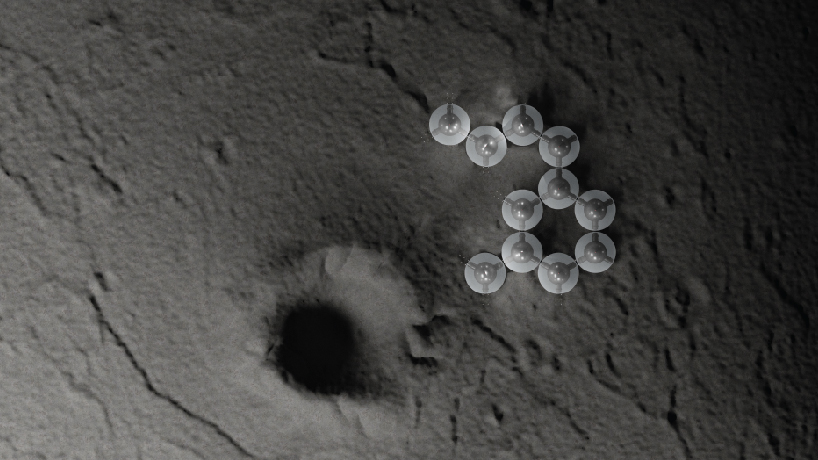
六边形结构扩展的HESTIA聚合体
an aggregation of structures in a hexagonal pattern
提出新的建筑形式
关于该项目的充气结构形式,建筑师分享道:“根据物理学,任何物体一旦充满了均匀的压力空气,其结构形状都会变得更加柔和,接近于球体、环面、半球端圆柱体。未来,太空建筑将会被加压以呈现出球形,符合美学思想,或者设计为球形的压力容器,控制由高压引起的表面张力。不过,这些都会使太空建筑受到几何柔性边界的限制,其内部组织维持在柔性系统下,和西方观念中完美的矩形安排大相径庭。”
PROPOSING NEW ARCHITECTURAL FORMS
Reflecting on her proposal, the architect shares: ‘Physically, any structural form, once filled with pressurized air organically tends to become a softer shape, much closer in its geometrical properties to a sphere, a torus, or a cylinder with domed ends. The future of space architecture would expect the need for pressurization, pushing the aesthetic towards circular and spherical designs. Space architecture is designed as pressure vessels with geometrical forms where surface tension caused by high pressure can be managed. Space architecture becomes physically constrained by soft geometrical boundaries. Any internal organization is forced to be maintained within soft formal systems, much resistant to the western perception of the perfect rectangular arrangement.’

为此,建筑师还想过充气结构的替代方案,由风化层制成的传统结构,可能拥有更好的耐久性。然而,这样的建造成本比较高,过程更复杂,因为它需要专门的设备和施工前的额外准备。
Alternatives to inflatable structures were also considered for this project — specifically, traditional systems built of regolith, highlighting their potential durability and resistance to the harsh conditions on the lunar surface. Building with regolith, however, may be more costly as it involves a complex process (i.e., the need for specialized equipment and additional preparation before construction).
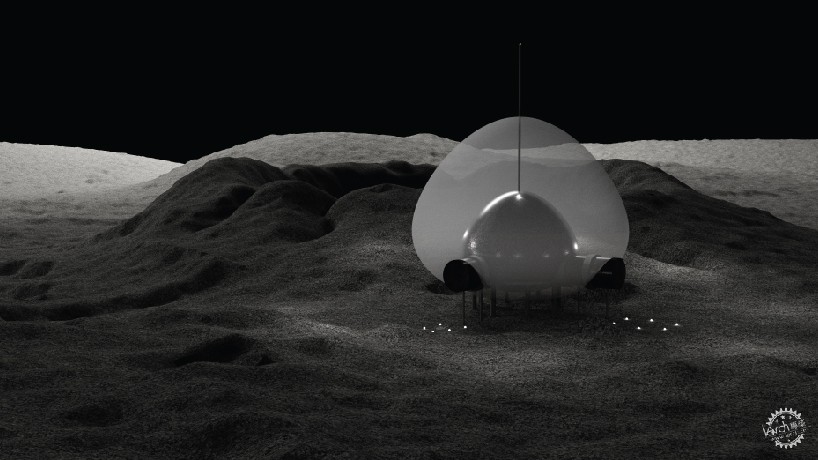
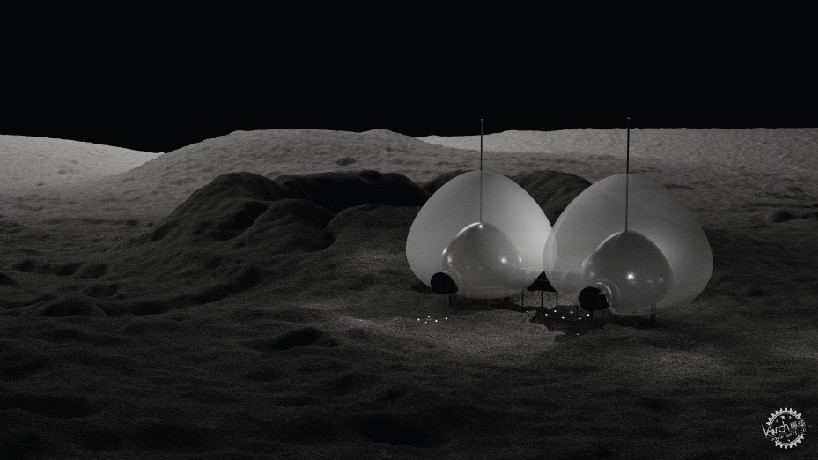
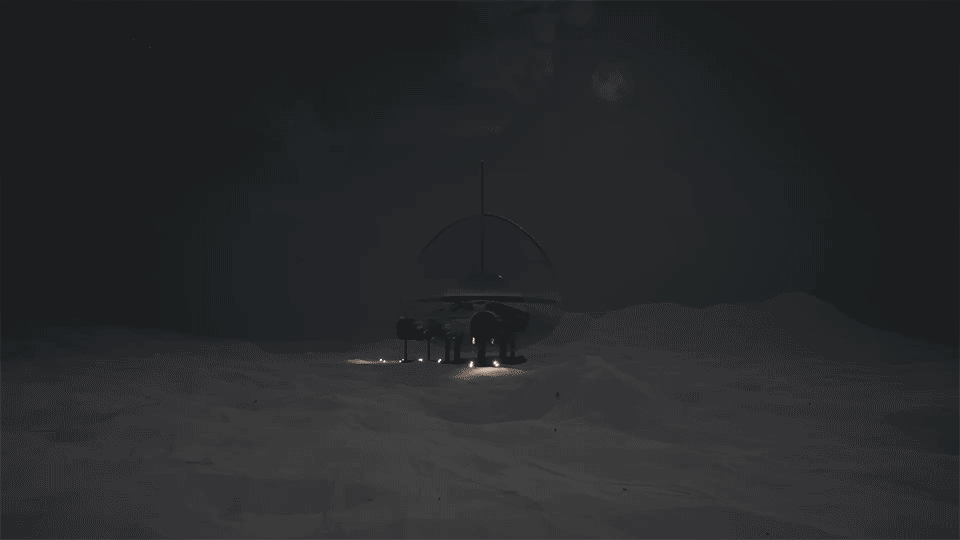
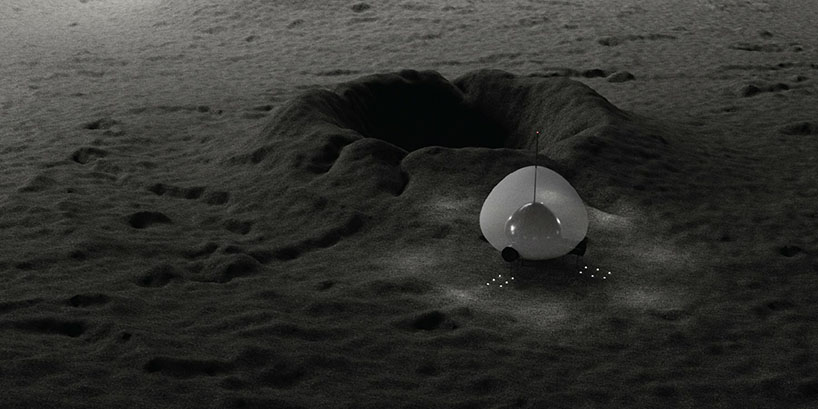
项目信息
项目名称:
功能:充气式月球栖息地
设计师:Lucy Zakharova – Space Architect | @lucy__zakharova
project info:
name: HESTIA
function: Inflatable lunar habitat
design: Lucy Zakharova – Space Architect | @lucy__zakharova
|
|
